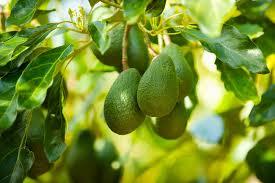Are you a farmer or a potential farmer? Do you want to grow Avocado tree but have no idea as regards to how to get started? Then below is a comprehensive guide on how to make an avacado tree bear fruit.
Avocado tree are healthy and delicious, so it can be disappointing when your tree fails to produce a crop. The three species of avocados that are commercially grown are Persea nubigena var. guatamalensis, Persea americana var. drymifolia and Persea americana var. americana, all hardy in USDA zones 10 through 11.
If you live in a colder USDA zone, low temperatures might be the cause of your tree’s failure to fruit. Otherwise, the tree’s age, pollination requirements or growing conditions could be to blame.
Avocado Tree Age
An avocado tree must reach a certain age before it can fruit. Trees that are sold commercially are grafted from mature avocado varieties and produce fruit more quickly and reliably than trees grown from seed.
If you grew your tree from an avocado pit, it won’t bear fruit until it’s at least 10 years old, and you may have to wait up to 15 years. On the other hand, if you planted a tree from a nursery or garden center, the tree should begin to produce a crop after three or four years.
Avocado Pollination
For the best yields of fruit, two avocado trees are required. Avocado tree cultivars produce either type A flowers or type B flowers. Both flower types produce and are receptive to pollen at different times of day, and the best pollination and fruit set occur when type A and B avocado cultivars grow together.
For example, ‘Day’ is a type A avocado that’s hardy in USDA zones 9 through 11, and ‘Pancho’ is a type B tree that’s hardy in USDA zones 8b through 11. If both trees are growing in the same garden, the overall yield should be higher than that from two trees growing alone. However, some cultivars naturally bear fruit only every other year.
Read Also: Anatomy of Fishes: Female Fish and their Reproductive Strategies
Growing Requirements
Avocado trees require specific growing conditions to produce a crop of fruit. The trees grow best in sandy loam, and although they will survive growing in shade, they only bear fruit when growing in a sunny spot. Poor drainage and flooding are harmful to the trees.
To avoid overwatering, water avocado trees only when a ball of soil from under the tree crumbles in your hand. Prolonged temperatures over 100 F or below 70 F also cause low fruit set and fruit drop. Strong winds cause the fruits and foliage to drop as well.
Fertilizing avocado trees can encourage them to bear fruit. Young trees require fertilizer six times per year, roughly once every two months, and trees that are 4 years old and older should be fertilized four times per year.
Apply a fertilizer like 6-6-6-2 or 8-3-9-3, and divide it into equal portions to deliver 1.5 to 3 pounds per year for a 1-year-old tree, 3 to 6 pounds for a 2-year-old tree, 6 to 9 pounds for a 3-year-old tree, 9 to 10 pounds for a 4-year-old tree and 10 to 14 pounds for a 5-year-old tree.
Older trees require an extra 2 pounds of fertilizer per year for each year of the tree’s growth up to a maximum of 20 pounds.
Avocado trees up to 4 or 5 years old also benefit from nutritional sprays that contain zinc, boron, manganese and molybdenum. Spray the young trees six times per year. For older trees, sprays containing zinc and manganese are beneficial. Spray older trees four times per year.
Apply these nutritional sprays at regular intervals between midspring and late summer. An avocado tree that’s growing in alkaline soil may be deficient in iron. Apply iron chelate soil drenches between early and late summer at intervals according to the manufacturer’s directions.
